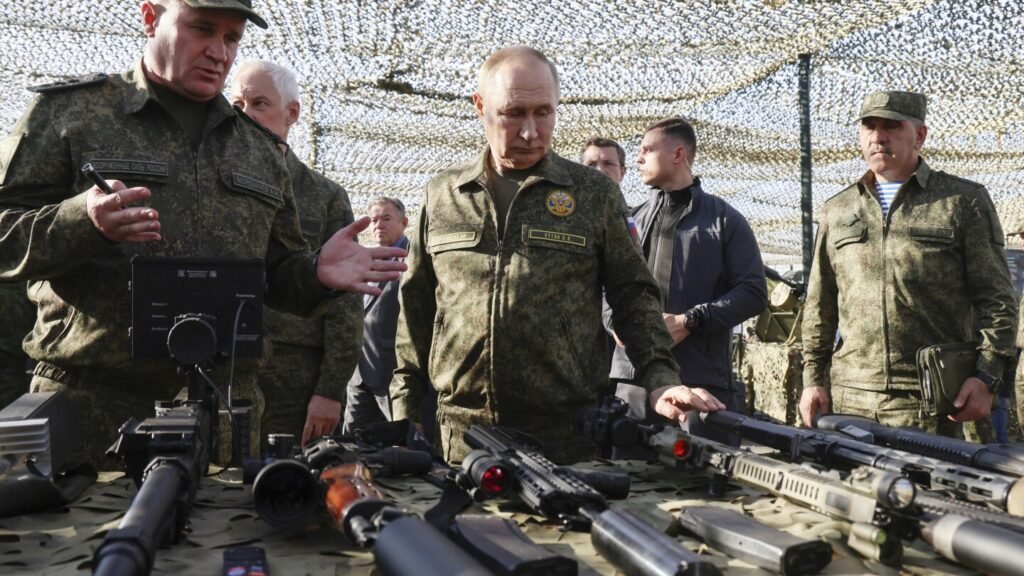Estonia Protests Russian Airspace Incursion: Growing Tensions in the Baltic Region
In a significant escalation of regional tensions, Estonia has summoned a Russian diplomat following the unauthorized entry of three Russian fighter jets into its airspace on Friday. The Russian aircraft remained in Estonian airspace for approximately 12 minutes, prompting concerns over a potential spillover from the ongoing conflict in Ukraine.
Unprecedented Breach
Estonia’s Foreign Ministry reported that this incident marks the fourth violation of its airspace by Russia this year, but it was characterized by Foreign Minister Margus Tsahkna as "unprecedentedly brazen." The timing of the incursion is particularly alarming, arriving less than two weeks after NATO successfully downed Russian drones over Poland.
“We cannot overlook this blatant disregard for our airspace,” said Tsahkna, emphasizing the need for heightened vigilance against Russian aggression.
NATO’s Response
In light of recent violations, Estonian Defense Minister Hanno Pevkur announced the initiation of consultations among NATO allies under Article 4 of the NATO treaty, which mandates discussions when a member country feels its security is threatened. Pevkur’s comments underscore a growing commitment among allies to respond to Russian transgressions assertively.
NATO’s North Atlantic Council is scheduled to meet next week to deliberate the details surrounding this incident, further reinforcing NATO’s collective defense strategy.
Global Reaction
U.S. President Donald Trump has expressed his concern regarding the breach, labeling it potentially "big trouble" in a recent press conference. The incident has reverberated throughout Europe, rattling governments that are already anxious about the potential for the Ukraine conflict to widen.
Kaja Kallas, the European Union’s foreign policy chief, condemned the incursion as "an extremely dangerous provocation" that could escalate regional tensions.
“Showing weakness in response will only invite further aggression,” Kallas added.
Military Implications
The Estonian military reported that the Russian fighter jets, identified as MIG-31s, entered airspace near Vaindloo Island in the Gulf of Finland without flight plans or operational transponders. They also failed to communicate with Estonian air traffic control, raising serious safety concerns.
Italian Air Force F-35 jets, part of the NATO Baltic Air Policing Mission, were deployed to intercept the intruding aircraft, exemplifying NATO’s readiness to respond to such provocations. As Maj. Taavi Karotamm from the Estonian Defense Forces remarked, the Russian jets flew along the border without heading towards the capital, Tallinn.
Karotamm speculated that the violation could be a strategic move by Russia to refocus NATO’s attention on regional security rather than Ukraine’s defense.
The Bigger Picture: European Security Concerns
The recent Russian incursion into Estonia comes amid heightened scrutiny of Moscow’s global ambitions. The breach reflects a broader pattern of Russian military activities that have unnerved neighboring countries. The incident in Estonia follows another serious violation, when Russian aircraft crossed into Poland’s airspace last month, marking the first such occurrence since Russia’s invasion of Ukraine in February 2022.
Experts suggest that this pattern of behavior indicates Russia’s increasing aggression, posing a direct threat not just to Ukraine but to all countries bordering Russia.
MI6 Chief on Russia’s Intentions
Adding to the discussions surrounding the conflict, British spy chief Richard Moore asserted that there is "absolutely no evidence" that President Vladimir Putin is interested in negotiating peace. "The war is far from over, and while Ukraine has pursued diplomatic avenues, Moscow continues to resist," Moore stated.
Conclusion
Estonia’s recent diplomatic actions serve as a wake-up call for NATO and its member states. As the specter of conflict looms larger in Europe, the necessity for a united and robust response to Russian incursions becomes increasingly evident. Heightened vigilance and collaboration among NATO allies will be crucial in navigating this complex geopolitical landscape.
For more insights into European security issues and the ongoing conflict in Ukraine, follow comprehensive updates on AP News.


